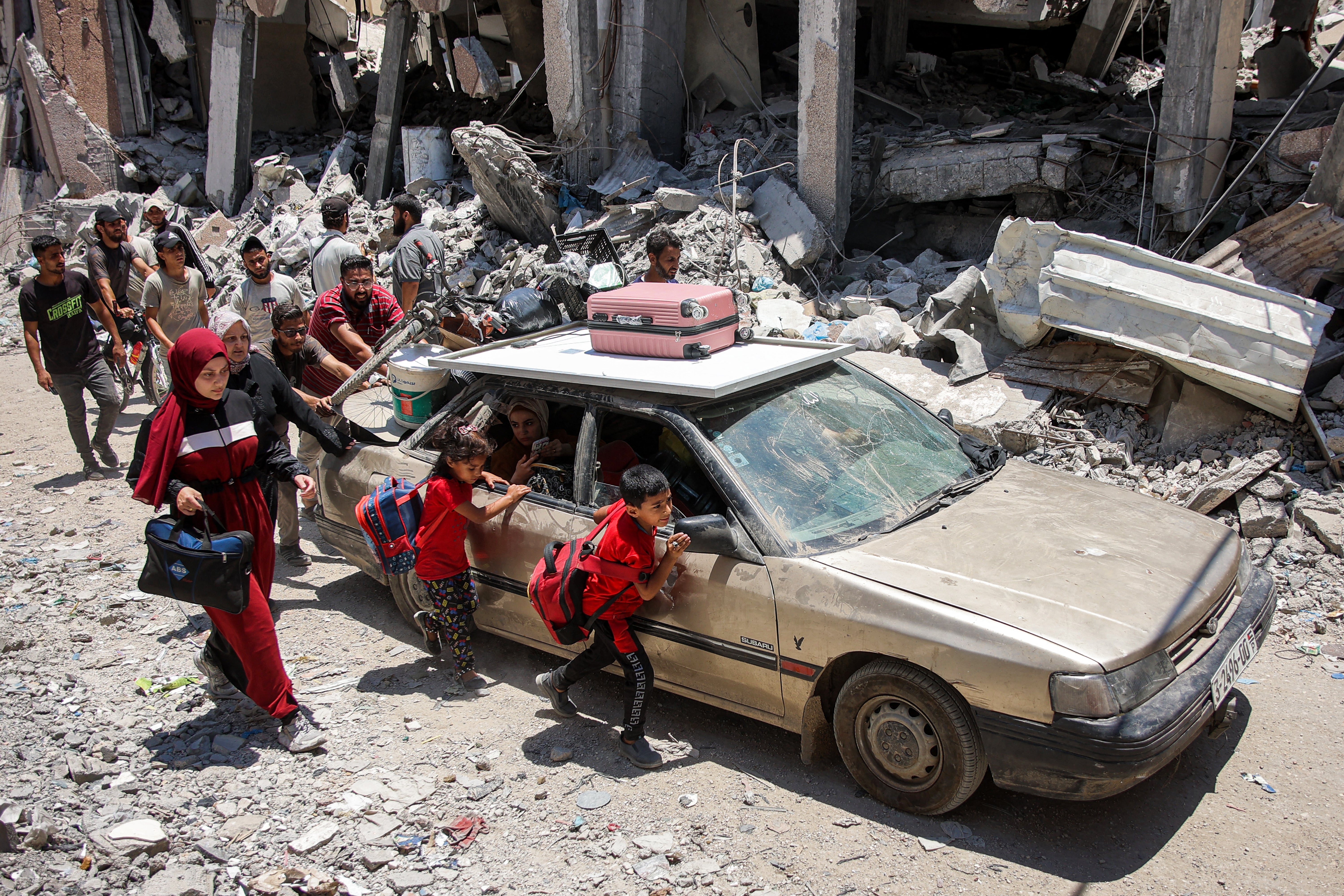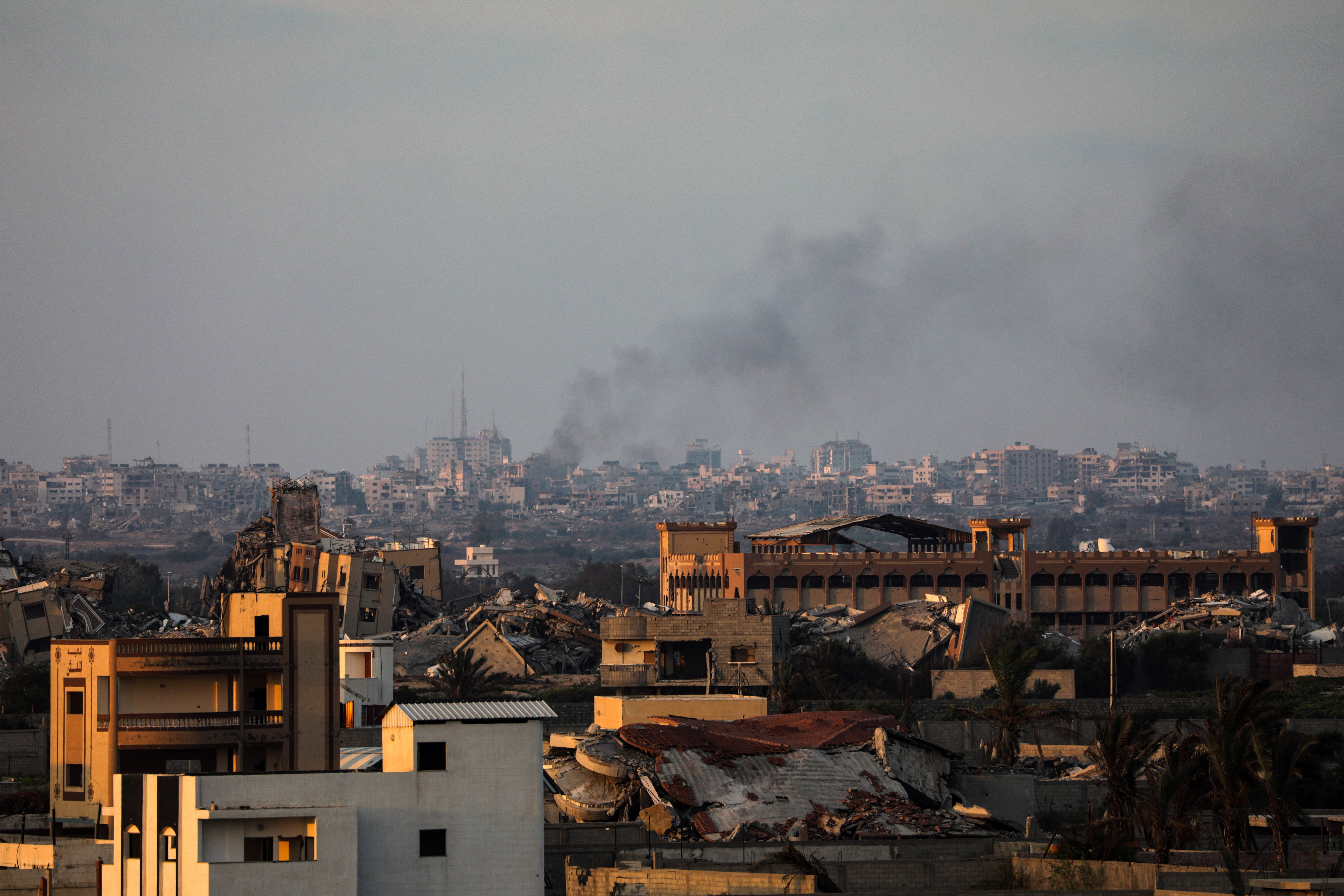Israel launches fresh strikes on northern Gaza forcing Palestinians to flee
Footage shows large groups of Palestinians leaving the area as Israel launches another offensive

Your support helps us to tell the story
From reproductive rights to climate change to Big Tech, The Independent is on the ground when the story is developing. Whether it's investigating the financials of Elon Musk's pro-Trump PAC or producing our latest documentary, 'The A Word', which shines a light on the American women fighting for reproductive rights, we know how important it is to parse out the facts from the messaging.
At such a critical moment in US history, we need reporters on the ground. Your donation allows us to keep sending journalists to speak to both sides of the story.
The Independent is trusted by Americans across the entire political spectrum. And unlike many other quality news outlets, we choose not to lock Americans out of our reporting and analysis with paywalls. We believe quality journalism should be available to everyone, paid for by those who can afford it.
Your support makes all the difference.Thousands of Palestinians have fled northern Gaza after Israeli forces launched another offensive in the area.
Preparatory airstrikes killed at least three people and wounded six more in Gaza City neighbourhoods overnight, according to local health workers, and allegedly buried more under the rubble. Israel then moved multiple divisions of soldiers into the Shijaiyah region on the eastern outskirts of Gaza City, before they embarked on multiple raids in the area to root out Hamas militants they claimed were hiding out there.
The Israeli military ordered new evacuations from the Shijaiyah region and shortly afterwards, residents in a messaging group shared a video showing large numbers of people fleeing the neighbourhood on foot with their belongings in their arms.
But Palestinians and humanitarian aid organisations say there is nowhere left for them to go, as the central and southern parts of Gaza have, like the northern half of the enclave, suffered significant damage.
Israel has designated “humanitarian zones” throughout the Gaza Strip for fleeing civilians but have nonetheless bombed the areas, claiming that Hamas is using the spaces to hide.

After striking a building in central Gaza’s Deir al Balah, which was within one of the “humanitarian zones”, the Israeli military said the strikes were because they were targeting a Hamas fighter.
“The terrorist operated from within the humanitarian area, which the organisation uses as a shield for terrorist activity,” they said in a statement. The military claimed measures were taken to ensure no harm to civilians. Hamas denies using civilians as shields.
In separate “significant” strikes in northern Gaza, the military said dozens of Hamas militants had been killed, with some were holed up in a school and facilities run by the United Nations’ agency for Palestinian refugees (UNRWA). No evidence was provided over the claim and UNRWA previously denying that militants use their facilities.
Hundreds of thousands of people have remained in the north, even as Israeli troops have surrounded and largely isolated it in the search for Hamas.
In the south, around the border city of Rafah, where hundreds of thousands of people are still sheltering, residents said Israeli tanks advanced further west into the Shakoush neighbourhood of the city, forcing thousands of displaced people there to leave their tent camps and head northward to the nearby Khan Younis.
Israel’s offensive against Hamas, which runs the Gaza Strip, has killed more than 37,700 Palestinians, according to Gaza’s health ministry, which does not differentiate between civilians and fighters in its count. Thousands of women and children are among the dead.
Since early May, tanks have advanced in several districts of Rafah, and Israeli forces remain in control of the entire border line with Egypt and the Rafah crossing, the only gateway for most of Gaza's 2.3 million people with the outside world.
One resident, who spoke to Reuters via a chat app, said some bulldozers in the Shakoush area were piling up sand for Israeli tanks to station behind. "Some families live in the area of the raid and are now besieged by the occupation forces," he said. "The situation there is very dangerous and many families are leaving towards Khan Younis, even from the Mawasi area as things became unsafe for them," said the man, who moved northward overnight.
The war was triggered by Hamas’ surprise attack into Israel on 7 October, in which around 1,200 people and took another 250 hostage.
International criticism has been growing over Israel’s campaign against Hamas as Palestinians face severe and widespread hunger.
The eight-month war has largely cut off the flow of food, medicine and basic goods to Gaza, and people there are now totally dependent on aid.
Reuters and Associated Press contributed to this report
Join our commenting forum
Join thought-provoking conversations, follow other Independent readers and see their replies
Comments